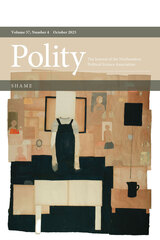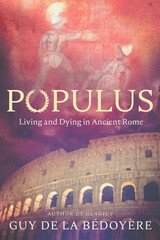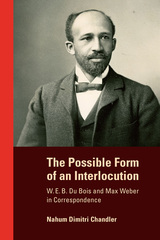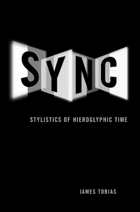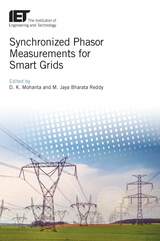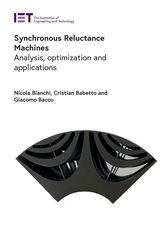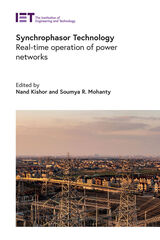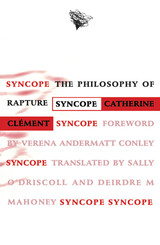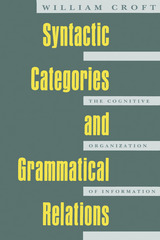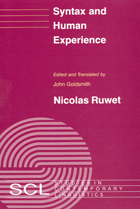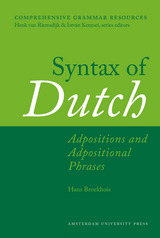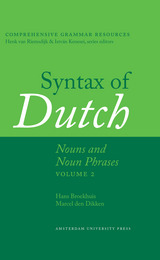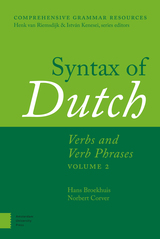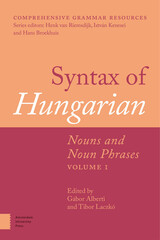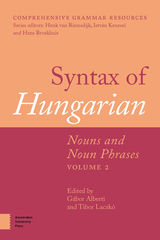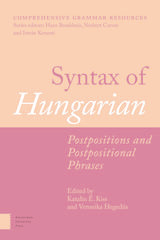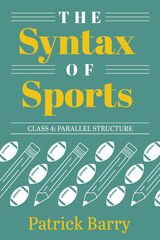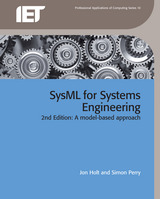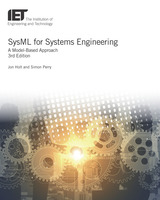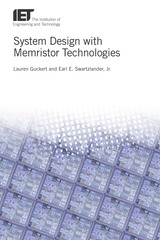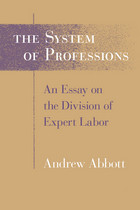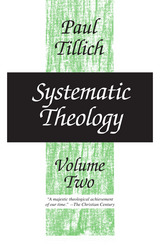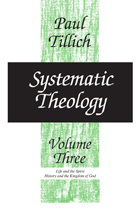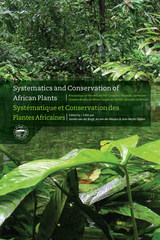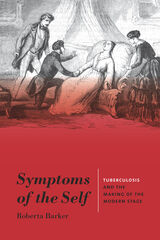 Symptoms of the Self: Tuberculosis and the Making of the Modern Stage
Roberta Barker
University of Iowa Press, 2022 2023 Le Prix Ann Saddlemyer Award, Winner
Symptoms of the Self offers the first full study of the stage consumptive. In the nineteenth and early twentieth centuries in France, Britain, and North America, tuberculosis was a leading killer. Its famous dramatic and operatic victims—Marguerite Gautier in La Dame aux Camélias and her avatar Violetta in La Traviata, Mimì in La Bohème, Little Eva in Uncle Tom’s Cabin, and Edmund Tyrone in Long Day’s Journey into Night, to name but a few—are among the most iconic figures of the Western stage. Its classic symptoms, the cough and the blood-stained handkerchief, have become global performance shorthand for life-threatening illness.
The consumptive character became a vehicle through which standards of health, beauty, and virtue were imposed; constructions of class, gender, and sexuality were debated; the boundaries of nationhood were transgressed or maintained; and an exceedingly fragile whiteness was held up as a dominant social ideal. By telling the story of tuberculosis on the transatlantic stage, Symptoms of the Self uncovers some of the wellsprings of modern Western theatrical practice—and of ideas about the self that still affect the way human beings live and die.
 Symptoms of Unknown Origin: A Medical Odyssey
Clifton K. Meador
Vanderbilt University Press, 2005 For years after graduating from medical school, Dr. Clifton K. Meador assumed that symptoms of the body, when obviously not imaginary, indicate a disease of the body—something to be treated with drugs, surgery, or other traditional means. But, over several decades, as he saw patients with clear symptoms but no discernable disease, he concluded that his own assumptions were too narrow and, indeed, that the underlying basis for much of clinical medicine was severely limited.
Recounting a series of fascinating case studies, Meador shows in this book how he came to reject a strict adherence to the prevailing biomolecular model of disease and its separation of mind and body. He studied other theories and approaches—George Engel's biopsychosocial model of disease, Michael Balint's study of physicians as pharmacological agents—and adjusted his practice accordingly to treat what he called "nondisease." He had to retool, learn new and more in-depth interviewing and listening techniques, and undergo what Balint termed a "slight but significant change in personality."
In chapters like "The Woman Who Believed She Was a Man" and "The Diarrhea of Agnes," Meador reveals both the considerable harm that can result from wrong diagnoses of nonexistent diseases and the methods he developed to help patients with chronic symptoms not defined by a medical disease. Throughout the book, he recommends subsequent studies to test his observations, and he urges full application of the scientific method to the doctor-patient relationship, pointing out that few objective studies of these all-important interactions have ever been done.
The Synagogue at Sardis
Andrew R. Seager
Harvard University Press The Synagogue at Sardis, discovered by the Harvard-Cornell expedition in 1962, is the largest synagogue known in the ancient world. Its great size, its location within a bath-gymnasium complex, its elaborate and expensive interior decorations, and the high status of many of the donors caused significant revision of previous assumptions about Judaism in the Roman Empire.
This long-awaited volume discusses in detail the history of the building, its decoration, and the place of the Jewish community in the larger society. Copiously illustrated with plans and photos, the book also includes catalogs of the decorative elements, coins, and other objects associated with this monumental religious space.
Sync: Stylistics of Hieroglyphic Time
Authored by James Tobias
Temple University Press, 2010 In Sync, James Tobias examines the development of musical sound and image in cinema and media art, indicating how these elements define the nature and experience of reception. Placing musicality at the center of understanding streaming media, Tobias presents six interwoven stories about synchronized audiovisual media—from filmmaker Sergei Eisenstein’s Alexander Nevsky to today’s contemporary digital art and computer games—to show how these effects are never merely "musical" in the literal sense of organized sound.
Synchronized Phasor Measurements for Smart Grids
Dusmanta Kumar Mohanta
The Institution of Engineering and Technology, 2017 The use of advanced technologies has made it possible to transform the power grid to an intelligent smart grid with real time control and monitoring of the system. The development of Phasor Measurement Units (PMUs) and the resulting possibility of real time measurements has enabled different power system applications to enhance the stability, state estimation, load estimation, power network protection, Wide-Area Security Assessment and reliability of the power grid.
Synchronized Phasor Measurements for Smart Grids
Maddikara Jaya Bharata Reddy
The Institution of Engineering and Technology, 2025 The use of advanced technologies is enabling the transformation of power grids to intelligent smart grids with real-time control and monitoring and integration of distributed renewable generation. With the development of phasor measurement units (PMUs) and the availability of real-time measurements, it has become possible to develop different power system applications to enhance stability and perform state estimation, load estimation, power network protection, and wide-area security assessment and reliability of the power grid.
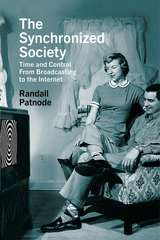 The Synchronized Society: Time and Control From Broadcasting to the Internet
Randall Patnode
Rutgers University Press, 2023 The Synchronized Society traces the history of the synchronous broadcast experience of the twentieth century and the transition to the asynchronous media that dominate today. Broadcasting grew out of the latent desire by nineteenth-century industrialists, political thinkers, and social reformers to tame an unruly society by controlling how people used their time. The idea manifested itself in the form of the broadcast schedule, a managed flow of information and entertainment that required audiences to be in a particular place – usually the home – at a particular time and helped to create “water cooler” moments, as audiences reflected on their shared media texts. Audiences began disconnecting from the broadcast schedule at the end of the twentieth century, but promoters of social media and television services still kept audiences under control, replacing the schedule with surveillance of media use. Author Randall Patnode offers compelling new insights into the intermingled roles of broadcasting and industrial/post-industrial work and how Americans spend their time.
Synchronous Reluctance Machines: Analysis, optimization and applications
Nicola Bianchi
The Institution of Engineering and Technology, 2022 Reluctance motors induce non-permanent magnetic poles on the ferromagnetic rotor; the rotor does not have any windings and torque is generated through magnetic reluctance. Synchronous reluctance motors (SyRMs) have an equal number of stator and rotor poles. Reluctance motors can deliver high power density at low cost, so they are finding increasing application in the transport sector. Disadvantages include high torque ripple and the complexity of designing and controlling them. Advances in theory, computer design, and control electronics can overcome these issues.
Synchrophasor Technology: Real-time operation of power networks
Nand Kishor
The Institution of Engineering and Technology, 2023 Phasor measurement units (PMUs) provide time synchronized measurements of phase angles of voltages or currents. These synchrophasors are used in electricity grids to support planning and operation. In the past decade, transmission network planners and grid operators have been using PMUs for monitoring applications. Improvements are still needed to realise the full potential of PMU data for more complex power systems with distributed renewables and increased loads. Challenges related to noise and higher frequency components from various dynamic behaviours of grid components, including electric vehicles, are prevalent.
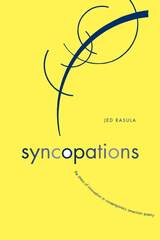 Syncopations: The Stress of Innovation in Contemporary American Poetry
Jed Rasula
University of Alabama Press, 2004 Makes a case for innovation as the generative and thematic force in American poetry of the late 20th century
Syncopations is an analysis of the sustaining vitality behind contemporary American poetry from 1975 to the present day by one of the most astute observers and critics in the field. The 12 essays reflect Jed Rasula’s nearly 30 years of advocacy on behalf of “opening the field” of American poetry.
From the Beats and the Black Mountain poets in the 1950s and 1960s to the impact of language poetry, the specter of an avant-garde has haunted the administrative centers of poetic conservatism. But the very concept of avant-garde is misleading, implying organized assault. Incentives for change can be traced to other factors, including the increased participation of women, critical theory’s self-reflection, and a growing interest in the book as a unit of composition. Syncopations addresses these and other issues evident in the work of such poets and critics as Clayton Eshleman, Marjorie Perloff, Ronald Johnson, Clark Coolidge, Nathaniel Mackey, and Robin Blaser. Its chapters range in modes and include close readings, sociological analysis, philosophical-aesthetic meditations, and career appraisals.
By examining both exemplary innovators and the social context in which innovation is either resisted, acclaimed, or taken for granted, Rasula delivers an important conceptual chronicle of the promise of American poetry.
Syncretism in the West: Pico's 900 Theses (1486) With Text, Translation, and Commentary
Edited by S. A. Farmer
Arizona Center for Medieval and Renaissance Studies, 2016 This is the 2016 paperback printing of the 2008 edition of the popular text, translation, and commentary by S. A. Farmer. (The 2008 edition was a revised edition of the 1998 original publication). Published by ACMRS (Arizona Center for Medieval and Renaissance Studies) in Tempe, Arizona as part of the MRTS (Medieval and Renaissance Texts and Studies) Series, this book -- previously available only in hardcover and otherwise out-of-print since 2014 -- is now available in its entirety in paperback format.
 SynergiCity: Reinventing the Postindustrial City
Edited by Paul Hardin Kapp and Paul J. Armstrong
University of Illinois Press, 2012 SynergiCity: Reinventing the Postindustrial City proposes a new and invigorating vision of urbanism, architectural design, and urban revitalization in twenty-first-century America. Culling transformative ideas from the realms of historic preservation, sustainability, ecological urbanism, and the innovation economy, Paul Hardin Kapp and Paul J. Armstrong present a holistic vision for restoring industrial cities suffering from population decline back into stimulating and productive places to live and work. With a particular emphasis on the Rust Belt of the American Midwest, SynergiCity argues that cities such as Detroit, St. Louis, and Peoria must redefine themselves to be globally competitive. This revitalization is possible through environmentally and economically sustainable restoration of industrial areas and warehouse districts for commercial, research, light industrial, and residential uses. The volume's expert researchers, urban planners, and architects draw on the redevelopment successes of other major cities--such as the American Tobacco District in Durham, North Carolina, and the Milwaukee River Greenway--to set guidelines and goals for reinventing and revitalizing the postindustrial landscape. Contributors are Paul J. Armstrong, Donald K. Carter, Lynne M. Dearborn, Norman W. Garrick, Mark Gillem, Robert Greenstreet, Craig Harlan Hullinger, Paul Hardin Kapp, Ray Lees, Emil Malizia, John O. Norquist, Christine Scott Thomson, and James Wasley.
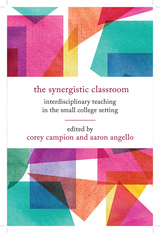 The Synergistic Classroom: Interdisciplinary Teaching in the Small College Setting
Corey Campion
Rutgers University Press, 2021 Among the many challenges confronting the liberal arts today is a fundamental disconnect between the curricula that many institutions offer and the training that many students need. Discipline-specific models of teaching and learning can underprepare students for the kinds of interdisciplinary collaboration that employers now expect. Although aware of these expectations and the need for change, many small colleges and universities have struggled to translate interdisciplinarity into programs and curricula that better serve today’s students.
Written by faculty engaged in the design and delivery of interdisciplinary courses, programs, and experiential learning opportunities in the small college setting, The Synergistic Classroom addresses the many ways faculty can leverage their institutions' small size and openness to pedagogical experimentation to overcome the challenges of limited institutional resources and enrollment concerns and better prepare students for life and work in the twenty-first century. Taken together, the contributions in this volume invite reflection on a variety of important issues that attend the work of small college faculty committed to expanding student learning across disciplinary boundaries.
The Synodicon Vetus
John M. Duffy and John Parker
Harvard University Press The Synodicon Vetus is a short anonymous account, based on Greek sources, of local synods and ecumenical councils from the time of the apostles to 886. It was first printed in 1601 by the Strasbourg theologian Johannes Pappus, who reproduced the truncated version sold to him several years earlier by the copyist and bookdealer Andreas Darmarios.
The work has frequently raised eyebrows. To some scholars it has appeared to offer items of information not attested elsewhere; to others it has betrayed itself as a mass of misunderstanding. The editors of this volume, the first critical edition of The Synodicon Vetus, believe that they have restored the text to near its original state and have succeeded in removing some of the mystery associated with an unusual document that continues to interest historians of heresies, church councils, and literature.
Synonyms for Silence
A. Molotkov
Acre Books, 2019 A. Molotkov’s third poetry collection, Synonyms for Silence, traverses a terrain of terror and wonder. These sharp, brief lyrics and prose poems subject the world to ethical and metaphysical scrutiny, examining the familiar as well as the unknowable aspects of human existence and contrasting our transient chemical reality with our ability to manifest meaning.
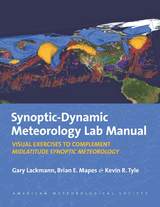 Synoptic-Dynamic Meteorology Lab Manual: Visual Exercises to Complement Midlatitude Synoptic Meteorology
Gary Lackmann, Brian E. Mapes, and Kevin R. Tyle
American Meteorological Society, 2017 One of the greatest challenges facing atmospheric science instructors is helping students link theoretical and mathematical concepts to the real atmosphere. The past decade has been characterized by remarkable advances in meteorological observation, computing techniques, and data-visualization technology. However, the benefit of these advances can only be fully realized with the introduction of a systematic, applied approach to meteorological education that allows well-established theoretical concepts to be used with modernized observational and numerical datasets.
This lab manual is a tool designed just for this purpose; it links theoretical concepts with groundbreaking visualization to elucidate concepts taught in the companion textbook by Gary Lackmann, Midlatitude Synoptic Meteorology, the most current text available on modern weather forecasting techniques. When used in concert with Lackmann’s book and its companion CD of lecture slides, this lab manual will guide students in using contemporary observational and visualization techniques to provide in-depth understanding of fundamental concepts and serve as a catalyst for student-led innovation and application. With topics considered in an order that reinforces and builds upon new knowledge in meteorological observation and analysis, these materials will help students to deepen their understanding of synoptic-dynamic meteorology, synoptically-driven mesoscale phenomena, numerical weather prediction, ensemble prediction, and more, and put this understanding into practice.
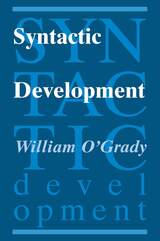 Syntactic Development
William O'Grady
University of Chicago Press, 1997 Syntactic Development presents a broad critical survey of the research literature on child language development. Giving balanced coverage to both theoretical and empirical issues, William O'Grady constructs an up-to-date picture of how children acquire the syntax of English.
Part 1 offers an overview of the developmental data pertaining to a range of syntactic phenomena, including word order, subject drop, embedded clauses, wh-questions, inversion, relative clauses, passives, and anaphora. Part 2 considers the various theories that have been advanced to explain the facts of development as well as the learnability problem, reporting on work in the mainstream formalist framework but also considering the results of alternative approaches.
Covering a wide range of perspectives in the modern study of syntactic development, this book is an invaluable reference for specialists in the field of language acquisition and provides an excellent introduction to the acquisition of syntax for students and researchers in psychology, linguistics, and cognitive science.
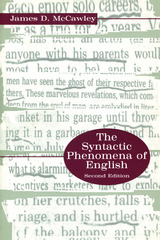 The Syntactic Phenomena of English
James D. McCawley
University of Chicago Press, 1998 This second edition of James D. McCawley's classic textbook offers in one volume a complete course in the syntactic structure of English. New to this edition are sections on appositive constructions, parasitic gaps, contrastive negation, and comparative conditional sentences, as well as expanded coverage of cleft sentences and free relatives. The presentation is coherent, comprehensive, and systematically organized, beginning with an overview of McCawley's approach to syntactic analysis and progressing through the major constructions and processes of English grammar. No prior special knowledge of syntax is presupposed, and the number and variety of exercises after each chapter have been increased.
And now available from the author! Answers to Selected Exercises.
Instructors using James D. McCawley's The Syntactic Phenomena of English, Second Edition may request a complimentary copy of Answers to Selected Exercises in The Syntactic Phenomena of English by writing on their department's letterhead to the author, James D. McCawley, Department of Linguistics, 1010 E. 59th Street, Chicago, IL 60637. [Note: This material is available only from the author and is not available from the University of Chicago Press.]
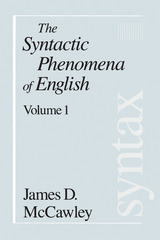 The Syntactic Phenomena of English, Volume 1
James D. McCawley
University of Chicago Press, 1988 This second edition of James D. McCawley's classic textbook offers in one volume a complete course in the syntactic structure of English. New to this edition are sections on appositive constructions, parasitic gaps, contrastive negation, and comparative conditional sentences, as well as expanded coverage of cleft sentences and free relatives. The presentation is coherent, comprehensive, and systematically organized, beginning with an overview of McCawley's approach to syntactic analysis and progressing through the major constructions and processes of English grammar. No prior special knowledge of syntax is presupposed, and the number and variety of exercises after each chapter have been increased.
And now available from the author! Answers to Selected Exercises.
Instructors using James D. McCawley's The Syntactic Phenomena of English, Second Edition may request a complimentary copy of Answers to Selected Exercises in The Syntactic Phenomena of English by writing on their department's letterhead to the author, James D. McCawley, Department of Linguistics, 1010 E. 59th Street, Chicago, IL 60637. [Note: This material is available only from the author and is not available from the University of Chicago Press.]
 The Syntactic Phenomena of English, Volume 2
James D. McCawley
University of Chicago Press, 1988 This second edition of James D. McCawley's classic textbook offers in one volume a complete course in the syntactic structure of English. New to this edition are sections on appositive constructions, parasitic gaps, contrastive negation, and comparative conditional sentences, as well as expanded coverage of cleft sentences and free relatives. The presentation is coherent, comprehensive, and systematically organized, beginning with an overview of McCawley's approach to syntactic analysis and progressing through the major constructions and processes of English grammar. No prior special knowledge of syntax is presupposed, and the number and variety of exercises after each chapter have been increased.
And now available from the author! Answers to Selected Exercises.
Instructors using James D. McCawley's The Syntactic Phenomena of English, Second Edition may request a complimentary copy of Answers to Selected Exercises in The Syntactic Phenomena of English by writing on their department's letterhead to the author, James D. McCawley, Department of Linguistics, 1010 E. 59th Street, Chicago, IL 60637. [Note: This material is available only from the author and is not available from the University of Chicago Press.]
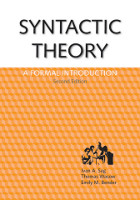 Syntactic Theory: A Formal Introduction, 2nd Edition
Ivan A. Sag, Thomas Wasow, and Emily M. Bender
CSLI, 2003 This second edition of Syntactic Theory: A Formal Introduction expands and improves upon a truly unique introductory syntax textbook. Like the first edition, its focus is on the development of precisely formulated grammars whose empirical predictions can be directly tested. There is also considerable emphasis on the prediction and evaluation of grammatical hypotheses, as well as on integrating syntactic hypotheses with matters of semantic analysis.
The book covers the core areas of English syntax from the last quarter century, including complementation, control, "raising constructions," passives, the auxiliary system, and the analysis of long distance dependency constructions. Syntactic Theory's step-by-step introduction to a consistent grammar in these core areas is complemented by extensive problem sets drawing from a variety of languages.
The book's theoretical perspective is presented in the context of current models of language processing, and the practical value of the constraint-based, lexicalist grammatical architecture proposed has already been demonstrated in computer language processing applications. This thoroughly reworked second edition includes revised and extended problem sets, updated analyses, additional examples, and more detailed exposition throughout.
Praise for the first edition:
"Syntactic Theory sets a new standard for introductory syntax volumes that all future books should be measured against."—Gert Webelhuth, Journal of Linguistics
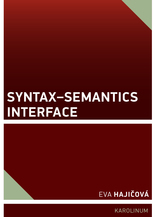 Syntax - Semantics Interface
Eva Hajicová
Karolinum Press, 2017 Syntax-Semantics Interface is a collection of papers written by leading Czech linguist Eva Hajičová between 1973 and 2014 that draw on the theoretical framework of the functional generative description proposed by Petr Sgall in the early 1960s and developed since. The book reflects Hajičová’s research contributions to four main domains: the specification of underlying (deep) sentence structure (analyzed in terms of dependency relations); the information structure of the sentence (topic-focus articulation) and its relation to the specification of presupposition and negation and to other related phenomena; the building of a scheme for an annotated corpus of Czech to serve, among other things, in the verification of theoretical linguistic claims; and some fundamental aspects of discourse structure, namely the concept of the hierarchy of elements in the stock of knowledge shared by speaker and hearer. Through new introductory statements, Hajičová also compares her original findings with current state-of-the-art of linguistic theory at home and abroad.
Syntax and Human Experience
Nicolas Ruwet
University of Chicago Press, 1991 "[Ruwet] raises fundamental questions about the place of grammar in the study of language and provides several studies which suggest the possibility that some core data are outside the realm of grammatical explanation. A very remarkable book, in which the breadth of Ruwet's reflection is both challenging and deeply rewarding."—Denis Bouchard, University of Quebec, Montreal
 The Syntax and Semantics of the Verb in Classical Greek: An Introduction: Third Edition
Albert Rijksbaron
University of Chicago Press, 2007 The verb is, in any language, the motor of all communication: no verb, no action. In Greek, verb forms change not only with person, number, tense, and voice, but in four possible moods as well. Available now in a special reprint for the North American market, The Syntax and Semantics of the Verb in Classical Greek is an incomparable resource to students and scholars charged with the considerable task of untangling the Greek language’s many complexities. With clear, concise instruction, Albert Rijksbaron shows how the various verb forms contribute to the richness of the Greek literature as we know it, in this essential guide for both novices and experienced practitioners. “[This study] belongs in the library of any Hellenist and any linguist interested in ancient Greek.”—Classics Newsletter (Anzeiger für die Altertumswissenschaft) “Every use is described with concision and clarity.”—Kratylos “The book offers an example of how the empirical thoroughness of traditional Classical scholarship can be brought into contact with general linguistic theory.”—Language
 Syntax and Speech
William E. Cooper and Jeanne Paccia-Cooper
Harvard University Press, 1980 Syntax and Speech is the first extensive examination of the relation between sentence structure and the organization of speech. Combining the methods of cognitive psychology, linguistics, and acoustics, the Coopers show that a surprising amount of syntactic information is conveyed by the subtle ways a speaker times the delivery of a sentence.
Syntax and Speech provides abundant experimental evidence that the syntactic boundaries of surface phrase structure have strong effects on the timing of the speech signal.
The Coopers develop a detailed theory of structural representation to account for the location of pauses and elongated speech sounds. This work bears importantly both upon psychological theories of speech production and linguistic theories of sentence structure. Moreover, their methods of examining speech provide an admirable model of how complex human behavior can be successfully analyzed. The results, which can be applied to language pathology and communications engineering and have clear parallels in other expressive behaviors such as American Sign Language, music, and animal communication, provide the starting point for many new lines of research in cognitive science.
Syntax of Dutch: Adjectives and Adjective Phrases
Hans Broekhuis
Amsterdam University Press, 2014 A series that aims to define Dutch grammar comprehensively, Syntax of Dutch synthesizes forty years of linguistic scholarship. Concerned primarily with description, this series is written in a direct and lucid style that renders each volume accessible to advanced students and scholars alike. Topics covered in this third volume include complementation and modification of adjective phrases; comparative and superlative formation; and the attributive, predicative, and adverbial uses of adjective phrases.
All together, the series will include seven volumes to be published between 2012 and 2016, each an essential addition to the library of any linguist working with Dutch.
Syntax of Dutch: Adpositions and Adpositional Phrases
Hans Broekhuis
Amsterdam University Press, 2013 Part of the larger Syntax of Dutch series, this volume focuses on the internal makeup and distribution of adpositional phrases in Dutch. It covers such topics as complementation and modification of adpositional phrases, as well as their predicative, attributive, and adverbial uses.
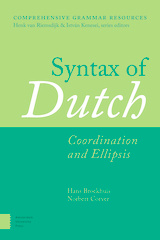 Syntax of Dutch: Coordination and Ellipsis
Hans Broekhuis
Amsterdam University Press, 2019 The multi-volume work Syntax of Dutch presents a synthesis of current thinking on Dutch syntax. The text of the seven already available volumes was written between 1995 and 2015 and issued in print between 2012 and 2016. The various volumes are primarily concerned with the description of the Dutch language and, only where this is relevant, with linguistic theory. They will be an indispensable resource for researchers and advanced students of languages and linguistics interested in the Dutch language. This volume is the final one of the series and addresses issues relating to coordination. It contains three chapters. Chapter 1 discusses the syntactic and semantic properties of coordinate structures and their constituting elements, that is, the coordinators and the coordinands they link. Chapter 2 discusses the types of ellipsis known as conjunction reduction and gapping found in coordinate structures. Chapter 3 discusses elements seemingly exhibiting coordination-like properties, such as dan ‘than’ in comparative constructions like Jan is groter dan zij ‘Jan is taller than she’.
Syntax of Dutch: Nouns and Noun Phrases, Volume 2
Hans Broekhuis and Marcel den Dikken
Amsterdam University Press, 2013
Syntax of Dutch presents a synthesis of formal linguistic research of the Dutch language from over forty years of scholarship. It is primarily concerned with language description, and provides support to all researchers interested in matters relating to the syntax of Dutch. These volumes provide a dense yet highly organized description of the internal structure of the noun phrase as well as its external distribution within the clause. These works are written with a directness and lucidity that makes it accessible to linguists of all kinds, including advanced students. This work, which will published in seven volumes in the period 2012–2016, is an essential addition to the library of any linguist working with Dutch.
Syntax of Dutch: Nouns and Noun Phrases (Volume I)
Hans Broekhuis and Evelien Keizer
Amsterdam University Press, 2013 Syntax of Dutch presents a synthesis of formal linguistic research of the Dutch language from over forty years of scholarship. It is primarily concerned with language description, and provides support to all researchers interested in matters relating to the syntax of Dutch. These volumes provide a dense yet highly organized description of the internal structure of the noun phrase as well as its external distribution within the clause. These works are written with a directness and lucidity that makes it accessible to linguists of all kinds, including advanced students. This work, which will be published in seven volumes total in the period 2012–2016, is an essential addition to the library of any linguist working with Dutch.
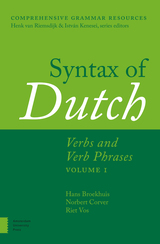 Syntax of Dutch: Verbs and Verb Phrases. Volume 1
Hans Broekhuis
Amsterdam University Press, 2015 14% discount on a subscription to the complete series, please contact us via orders@aup.nl.The Syntax of Dutch aims at presenting a synthesis of the currently available syntactic knowledge of Dutch. It is primarily concerned with language description and not with linguistic theory, and provides support to all researchers interested in matters relating to the syntax of Dutch, including advanced students of language and linguistics. Syntax of Dutch: Verbs and Verb Phrases consists of three volumes. Volume 1 opens with a general introduction to verbs, including a review of various verb classifications and discussions on inflection, tense, mood, modality and aspect. This is followed by a comprehensive discussion of complementation (argument structure and verb frame alternations). Volume 2 continues the discussion of complementation, but is more specifically focused on clausal complements: the reader will find detailed discussions of finite and infinitival argument clauses, complex verb constructions and verb clustering. Volume 3 concludes with a description of adverbial modification and the overall structure of clauses in relation to, e.g., word order (verb placement, wh-movement. extraposition phenomena, scrambling, etc.).
Syntax of Dutch: Verbs and Verb Phrases. Volume 2
Hans Broekhuis
Amsterdam University Press, 2015 Syntax of Dutch: Verbs and Verb Phrases consists of three volumes. Volume 1 opens with a general introduction to verbs, including a review of various verb classifications and discussions on inflection, tense, mood, modality and aspect. This is followed by a comprehensive discussion of complementation (argument structure and verb frame alternations). Volume 2 continues the discussion of complementation, but is more specifically focused on clausal complements: the reader will find detailed discussions of finite and infinitival argument clauses, complex verb constructions and verb clustering. Volume 3 concludes with a description of adverbial modification and the overall structure of clauses in relation to, e.g., word order (verb placement, wh-movement. extraposition phenomena, scrambling, etc.).
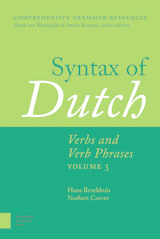 Syntax of Dutch: Verbs and Verb Phrases. Volume 3
Hans Broekhuis
Amsterdam University Press, 2016 The Syntax of Dutch aims at presenting a synthesis of the currently available syntactic knowledge of Dutch. It is primarily concerned with language description and not with linguistic theory, and provides support to all researchers interested in matters relating to the syntax of Dutch, including advanced students of language and linguistics. Syntax of Dutch: Verbs and Verb Phrases consists of three volumes. Volume 1 opens with a general introduction to verbs, including a review of various verb classifications and discussions on inflection, tense, mood, modality and aspect. This is followed by a comprehensive discussion of complementation (argument structure and verb frame alternations). Volume 2 continues the discussion of complementation, but is more specifically focused on clausal complements: the reader will find detailed discussions of finite and infinitival argument clauses, complex verb constructions and verb clustering. Volume 3 concludes with a description of adverbial modification and the overall structure of clauses in relation to, e.g., word order (verb placement, wh-movement. extraposition phenomena, scrambling, etc.).
 Syntax of Hungarian: Coordination and Ellipsis
Zoltán Bánréti
Amsterdam University Press, 2022 Syntax of Hungarian aims to present a synthesis of the currently available syntactic knowledge of the Hungarian language, rooted in theory but providing highly detailed descriptions, and intended to be of use to researchers, as well as advanced students of language and linguistics. As research in language leads to extensive changes in our understanding and representations of grammar, the Comprehensive Grammar Resources series intends to present the most current understanding of grammar and syntax as completely as possible in a way that will both speak to modern linguists and serve as a resource for the non-specialist.
This volume provides a comprehensive overview and description of coordinate structures, the syntactic and semantic types of conjunctions, as well as the types of ellipses in sentences and short dialogues. It discusses multiple conjunctions, coordinated wh-constructions, sluicing, and sentence fragments.
 Syntax of Hungarian: Non-Finite Verb Phrases
Gábor Alberti
Amsterdam University Press, 2025 Syntax of Hungarian aims to present a synthesis of the currently available syntactic knowledge of the Hungarian language, rooted in theory but providing highly detailed descriptions, and intended to be of use to researchers, as well as advanced students of language and linguistics. As research in language leads to extensive changes in our understanding and representations of grammar, the Comprehensive Grammar Resources series intends to present the most current understanding of grammar and syntax as completely as possible in a way that will both speak to modern linguists and serve as a resource for the non-specialist.
The current volume discusses the internal make-up as well as the distribution of infinitival constructions. Topics that are covered include complementation and modification. The volume also provides a brief description of other non-finite constructions in Hungarian, such as different types of participle and converbs.
Syntax of Hungarian: Nouns and Noun Phrases, Volume 1
Edited by Gábor Alberti and Tibor Laczkó
Amsterdam University Press, 2018 These books aim to present a synthesis of the currently available syntactic knowledge of the Hungarian language, rooted in theory but providing highly detailed descriptions, and intended to be of use to researchers, as well as advanced students of language and linguistics. As research in language leads to extensive changes in our understanding and representations of grammar, the Comprehensive Grammar Resources series intends to present the most current understanding of grammar and syntax as completely as possible in a way that will both speak to modern linguists and serve as a resource for the non-specialist.
Syntax of Hungarian: Nouns and Noun Phrases, Volume 2
Edited by Gábor Alberti and Tibor Laczkó
Amsterdam University Press, 2018 These books aim to present a synthesis of the currently available syntactic knowledge of the Hungarian language, rooted in theory but providing highly detailed descriptions, and intended to be of use to researchers, as well as advanced students of language and linguistics. As research in language leads to extensive changes in our understanding and representations of grammar, the Comprehensive Grammar Resources series intends to present the most current understanding of grammar and syntax as completely as possible in a way that will both speak to modern linguists and serve as a resource for the non-specialist.
Syntax of Hungarian: Postpositions and Postpositional Phrases
Katalin É. Kiss
Amsterdam University Press, 2021 The Syntax of Hungarian aims to present a synthesis of the currently available syntactic knowledge of the Hungarian language, rooted in theory but providing highly detailed descriptions, and intended to be of use to researchers as well as advanced students of language and linguistics. As research in language leads to extensive changes in our understanding and representations of grammar, the Comprehensive Grammar Resources series intends to present the most current understanding of grammar and syntax as completely as possible in a way that will both speak to modern linguists and serve as a resource for the non-specialist.
The Syntax of Spoken Arabic: A Comparative Study of Moroccan, Egyptian, Syrian, and Kuwaiti Dialects
Kristen Brustad
Georgetown University Press, 2000 This book is the first comparative study of the syntax of Arabic dialects, based on natural language data recorded in Morocco, Egypt, Syria, and Kuwait. These four dialect regions are geographically diverse and representative of four distinct dialect groups. Kristen E. Brustad has adopted an analytical approach that is both functional and descriptive, combining insights from discourse analysis, language typology, and pragmatics—the first time such an approach has been used in the study of spoken Arabic syntax. An appendix includes sample texts from her data. Brustad's work provides the most nuanced description available to date of spoken Arabic syntax, widens the theoretical base of Arabic linguistics, and gives both scholars and students of Arabic tools for greater cross-dialect comprehension.
 The Syntax of Spoken Brazilian Portuguese
Earl W. Thomas
Vanderbilt University Press, 1969 Increased personal contact among people of all parts of the world has underscored the inadequacy of traditional language study to meet contemporary communications needs. Linguistic science, in recent years, has responded to this breakdown of communications by emphasizing spoken, versus literary, language in the teaching of foreign languages.
Very real differences do exist between what is spoken and what is written in virtually every language. In Brazilian Portuguese, especially, the gulf between the two is wide: In many cases, the most cultured Brazilian is unable to comprehend with ease Brazilian literature written only fifty years ago.
THE SYNTAX OF SPOKEN BRAZILIAN PORTUGUESE is the first thorough analysis of the spoken language of contemporary Brazil, in English, for students and teachers of the language. Useful as a text in advanced language courses, the work is intended primarily for reference and as a research aid to future authors of Portuguese language textbooks.
 The Syntax of Sports, Class 1: The Words Under the Words
Patrick Barry
Michigan Publishing, 2019 The Syntax of Sports is that course you wish you took in college—even if you aren’t a sports fan. It’s interesting. It’s practical. It’s inspiring. And best of all, it teaches you a skill that is at once highly marketable and potentially transforming: how to become a better thinker and writer.
The beginning of a multi-volume series, this initial book recreates the first day of class as it was taught to undergraduates at the University of Michigan. The examples are compelling. The dialogue is fast moving. The stories are ones you’ll want to return to and retell over and over again. There is a reason the actual students who took The Syntax of Sports said the following things about it:
“Every class I learned something new that I know I’ll actually use in my writing for years to come. Couldn’t be happier that I took a chance on Syntax of Sports.”
“Prof. Barry has structured the course so that it’s almost impossible not to learn something valuable to take with you to future classes and future career possibilities.”
“I have learned a ton of techniques for being a better writer in this class. I have also learned many life lessons that will undoubtedly guide how I act in the future.”
“I absolutely loved this course because the teacher was so awesome. I enjoyed sitting through class listening to Professor Barry and falling in love with his brain.”
 The Syntax of Sports, Class 2: The Power of the Particular
Patrick Barry
Michigan Publishing, 2020 What can we learn from baseball great Ted Williams about how to improve our writing? What can we learn we from the iconic ESPN show SportsCenter about how to manage information? And are you sure you really know what the word “peruse” means?
Explore these and other questions in the second volume of The Syntax of Sports, a series designed to recreate a popular course at the University of Michigan. Here are a few things students have said about the experience of taking it. -
“Patrick Barry is the best teacher I have ever had. I have never learned so much in a class. I hated English my whole life until I took this course.” -
“I feel like this is and always will be the most valuable class I've ever taken here.” -
“I genuinely wanted to show up to this class due to the amount I knew I would learn.” -
“I'm going to severely SEVERELY miss this course.” -
“Every student should try to take one of Prof. Barry’s classes if he or she wants to become a better writer.” -
“My writing is now 113x better.”
The Syntax of Sports, Class 3: The Rule of Three
Patrick Barry
Michigan Publishing, 2021 It’s not an accident that hall of fame coaches, Pulitzer Prize-winning writers, and the marketing teams at the most innovative companies in the world often rely on a certain three-part structure when trying to communicate their ideas. This third volume of The Syntax of Sports series explores the mechanics of that structure and shows how it can add a compelling mix of clarity and sophistication to your writing. Like in the previous volumes, the materials come from a popular course at the University of Michigan. Here are comments from students who have taken it: “The quality of this course was fantastic!” “Professor Barry really knows how to keep students engaged.” “Professor Barry is very passionate about teaching, and his enthusiasm made me want to write and learn.” “This course not only helps you become a better writer but also sheds light on how you might become a better person.”
The Syntax of Sports, Class 4: Parallel Structure
Patrick Barry
Michigan Publishing, 2022 “Once you find the right structure, perhaps it will be easier to find the right content.” That’s one of the key insights from this fourth book in the series The Syntax of Sports. Others include: - The importance of being “radically inclusive”
- The power of defining something by what it is not
- The creative elegance of the word “as”
So join Professor Patrick Barry as he continues to share lessons from the popular writing course at the University of Michigan on which The Syntax of Sports is based. You’ll learn about language. You’ll learn about advocacy. And you’ll get to explore some illuminating connections between everything from the speeches of Winston Churchill, to the paintings of Leonardo da Vinci, to—perhaps most surprisingly—the face of NFL legend (and former University of Michigan quarterback) Tom Brady.
The Syntax of Sports, Class 5: Rhetorical Repetition
Patrick Barry
Michigan Publishing, 2024 Here are some of the words that the people who have attended Patrick Barry's classes and workshops have used to describe his unique, multidisciplinary approach to teaching writing: - "Fantastic"
- "Phenomenal"
- "Very engaging and informative:
- "Incredibly useful
- "Full of practical lessons for both my career and life generally"
This fifth book in his Syntax of Sports series gives you a chance to experience his creative (and capacious) mind for yourself. Whether you've already read the previous four books in the series or are trying one out for the very first time, you're in for quite the educational treat.
The Syntax of Sports, Class 6: Drafting and Editing
Patrick Barry
Michigan Publishing, 2024 How do you start a piece of writing? How do you edit one? And what can be done to combat those pesky—and paralyzing—feelings of perfectionism that often derail our most important sentences and paragraphs? This sixth volume of the Syntax of Sports series creatively uses the language of baseball, football, tennis, and many other sports to explore these questions. Based on a popular course at the University of Michigan, it captures the energy, originality, and discipline - crossing insights that make its author, Professor Patrick Barry, such a sought-after teacher and presenter.
 The Syntax of Subjects
Koichi Tateishi
CSLI, 1994 Linguists who work on the Japanese language have disagreed about the notion of subject with resopect to Japanese; many linguists argue that there is no formal symtactic position for the subject in Japanese. Tateishi does deeper research on the surface syntax of the subject, and looks in particular at the syntax of the subject and phenomena which have been treated as S-adjunctions. These two have been identified with each other on many occasions in the history of Japanese linguistics and are of interest with respect to the debate over configurationality in the language, which has been revivedd in different forms following the emergence of the VP-Internal Subject Hypothesis, the merits of which Tateishi discusses at length.
Tateishi's main claim is that despite all the non-configurational characteristics found in the language, Japanese is in a sense more configurational than the so-called configurational languages. Japanese allows more types of hierarchies to be involved in the subject-predicate relation than English allows, as Japanese does not have the same kind of restrictions on the phrase structure as the configurational languages have.
Koichi Tateishi is a professor of linguistics at the Kyoto University of Foreign Studies.
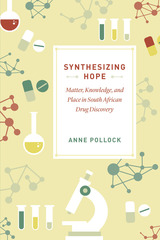 Synthesizing Hope: Matter, Knowledge, and Place in South African Drug Discovery
Anne Pollock
University of Chicago Press, 2019 Synthesizing Hope opens up the material and social world of pharmaceuticals by focusing on an unexpected place: iThemba Pharmaceuticals. Founded in 2009 with a name taken from the Zulu word for hope, the small South African startup with an elite international scientific board was tasked with drug discovery for tuberculosis, HIV, and malaria. Anne Pollock uses this company as an entry point for exploring how the location of scientific knowledge production matters, not only for the raw materials, manufacture, licensing, and distribution of pharmaceuticals but also for the making of basic scientific knowledge.
Consideration of this case exposes the limitations of global health frameworks that implicitly posit rich countries as the only sites of knowledge production. Analysis of iThemba identifies the problems inherent in global north/south divides at the same time as it highlights what is at stake in who makes knowledge and where. It also provides a concrete example for consideration of the contexts and practices of postcolonial science, its constraints, and its promise.
Synthesizing Hope explores the many legacies that create conditions of possibility for South African drug discovery, especially the specific form of settler colonialism characterized by apartheid and resource extraction. Paying attention to the infrastructures and laboratory processes of drug discovery underscores the materiality of pharmaceuticals from the perspective of their makers, and tracing the intellectual and material infrastructures of South African drug discovery contributes new insights about larger social, political, and economic orders.
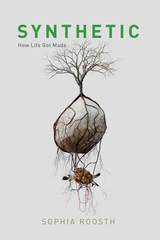 Synthetic: How Life Got Made
Sophia Roosth
University of Chicago Press, 2017 In the final years of the twentieth century, émigrés from engineering and computer science devoted themselves to biology and resolved that if the aim of biology is to understand life, then making life would yield better theories than experimentation. Armed with the latest biotechnology techniques, these scientists treated biological media as elements for design and manufacture: viruses named for computers, bacterial genomes encoding passages from James Joyce, chimeric yeast buckling under the metabolic strain of genes harvested from wormwood, petunias, and microbes from Icelandic thermal pools.
In Synthetic: How Life Got Made, cultural anthropologist Sophia Roosth reveals how synthetic biologists make new living things in order to understand better how life works. The first book-length ethnographic study of this discipline, Synthetic documents the social, cultural, rhetorical, economic, and imaginative transformations biology has undergone in the post-genomic age. Roosth traces this new science from its origins at MIT to start-ups, laboratories, conferences, and hackers’ garages across the United States—even to contemporary efforts to resurrect extinct species. Her careful research reveals that rather than opening up a limitless new field, these biologists’ own experimental tactics circularly determine the biological features, theories, and limits they fasten upon. Exploring the life sciences emblematic of our time, Synthetic tells the origin story of the astonishing claim that biological making fosters biological knowing.
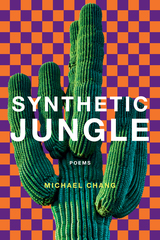 Synthetic Jungle: Poems
Michael Chang
Northwestern University Press, 2023 A new poetry collection from award-winning author Michael Chang
A vital breath of life arrives in American poetry with Synthetic Jungle, the latest collection from acclaimed poet Michael Chang. With poems in a register both hilarious and scathing, Synthetic Jungle effortlessly bashes convention while simultaneously rebuilding the language we use to communicate our fears and joys.
Synthetic Jungle is a collection written by a brilliant jester who winks at you as you catch their every reference before sharing a laugh at your own self-satisfaction. Themes of identity, sexuality, and literacy play out in a dizzying rhythm of microtheaters. Readers will find themselves giggling, snorting, and guffawing their way through this work: whether at a repudiation of the literary landscape or a critique of a failing justice system, to laugh along with Chang is to recognize your mistakes and, ultimately, grow from them.
Fractal and kinetic in the quick-witted spirit of John Ashbery and Emily Dickinson, Chang’s tender poems dance around, between, and through the personal and philosophical. Synthetic Jungle is as sweet as it is grand, and beneath its sarcastic grin reverberates an immense, open heart.
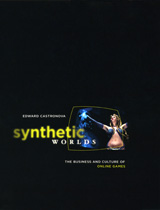 Synthetic Worlds: The Business and Culture of Online Games
Edward Castronova
University of Chicago Press, 2006 From EverQuest to World of Warcraft, online games have evolved from the exclusive domain of computer geeks into an extraordinarily lucrative staple of the entertainment industry. People of all ages and from all walks of life now spend thousands of hours—and dollars—partaking in this popular new brand of escapism. But the line between fantasy and reality is starting to blur. Players have created virtual societies with governments and economies of their own whose currencies now trade against the dollar on eBay at rates higher than the yen. And the players who inhabit these synthetic worlds are starting to spend more time online than at their day jobs. In Synthetic Worlds, Edward Castronova offers the first comprehensive look at the online game industry, exploring its implications for business and culture alike. He starts with the players, giving us a revealing look into the everyday lives of the gamers—outlining what they do in their synthetic worlds and why. He then describes the economies inside these worlds to show how they might dramatically affect real world financial systems, from potential disruptions of markets to new business horizons. Ultimately, he explores the long-term social consequences of online games: If players can inhabit worlds that are more alluring and gratifying than reality, then how can the real world ever compete? Will a day ever come when we spend more time in these synthetic worlds than in our own? Or even more startling, will a day ever come when such questions no longer sound alarmist but instead seem obsolete? With more than ten million active players worldwide—and with Microsoft and Sony pouring hundreds of millions of dollars into video game development—online games have become too big to ignore. Synthetic Worlds spearheads our efforts to come to terms with this virtual reality and its concrete effects. “Illuminating. . . . Castronova’s analysis of the economics of fun is intriguing. Virtual-world economies are designed to make the resulting game interesting and enjoyable for their inhabitants. Many games follow a rags-to-riches storyline, for example. But how can all the players end up in the top 10%? Simple: the upwardly mobile human players need only be a subset of the world's population. An underclass of computer-controlled 'bot' citizens, meanwhile, stays poor forever. Mr. Castronova explains all this with clarity, wit, and a merciful lack of academic jargon.”—The Economist
“Synthetic Worlds is a surprisingly profound book about the social, political, and economic issues arising from the emergence of vast multiplayer games on the Internet. What Castronova has realized is that these games, where players contribute considerable labor in exchange for things they value, are not merely like real economies, they are real economies, displaying inflation, fraud, Chinese sweatshops, and some surprising in-game innovations.”—Tim Harford, Chronicle of Higher Education
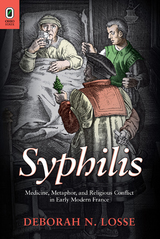 Syphilis: Medicine, Metaphor, and Religious Conflict in Early Modern France
Deborah N. Losse
Ohio State University Press, 2015 In Syphilis: Medicine, Metaphor, and Religious Conflict in Early Modern France, Deborah Losse examines how images of syphilis became central to Renaissance writing and reflected more than just the rapid spread of this new and poorly understood disease. Losse argues that early modern writers also connected syphilis with the wars of religion in sixteenth-century France. These writers, from reform-minded humanists to Protestant poets and Catholic polemicists, entered the debate from all sides by appropriating the disease as a metaphor for weakening French social institutions. Catholics and Protestants alike leveled the charge of paillardise (lechery) at one another. Losse demonstrates how they adopted the language of disease to attack each other’s politics, connecting diseased bodies with diseased doctrine.
Losse provides close readings of a range of genres, moving between polemical poetry, satirical narratives, dialogical colloquies, travel literature, and the personal essay. With chapters featuring Erasmus, Rabelais, Montaigne, Léry, and Agrippa d’Aubigné, this study compares literary descriptions of syphilis with medical descriptions. In the first full-length study of Renaissance writers’ engagement with syphilis, Deborah Losse charts a history from the most vehement rhetoric of the pox to a tenuous resolution of France’s conflicts, when both sides called for a return to order.
 Syracuse: Sicily's City of Stories
Joachim Sartorius
Haus Publishing, 2026 A poetic and historical travelogue of Syracuse, Sicily.
Twenty-five hundred years ago, the city of Syracuse on the eastern coast of Sicily was, for the Ancient Greeks, one of the centers of the classical world. It was in Syracuse that Aeschylus premiered his plays, and to Syracuse that Plato would visit from Athens, where the tyrant Dionysius bought Euripides's lyre at auction, and the languishing nymph Arethusa hid in the papyrus grove.
Living in the city, the poet Joachim Sartorius learned that this history and myth are still present today. At Sartorius's side, we walk with nymphs and cyclops through the old town of Ortigia and meet the people of the city: its notables, police officers, artists, and barbers.
Unraveling the depths of Sicilian history and bringing the juxtaposition, superimposition, and commingling of cultures, styles, and attitudes to life, Sartorius shows a city of ancient luminosity, bringing us, through the baroque, to the contemporary world.
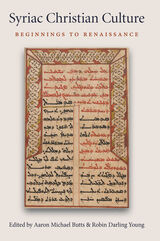 Syriac Christian Culture: Beginnings to Renaissance
Aaron Michael Butts
Catholic University of America Press, 2021 Syriac Christianity developed in the first centuries CE in the Middle East, where it continued to flourish throughout Late Antiquity and the Medieval period, while also spreading widely, as far as India and China. Today, Syriac Christians are found in the Middle East, in India, as well in diasporas scattered across the globe. Over this extended time period and across this vast geographic expanse, Syriac Christians have built impressive churches and monasteries, crafted fine pieces of art, and written and transmitted a sizable body of literature. Though often overlooked, neglected, and even persecuted, Syriac Christianity has been – and continues to be – an important part of the humanistic heritage of the last two millennia.
The present volume brings together fourteen studies that offer fresh perspectives on Syriac Christianity, especially its literary texts and authors. The timeframes of the individual studies span from the second-century Syriac translation of the Hebrew Bible up to the thirteenth century with the end of the Syriac Renaissance. Several studies analyze key authors from Late Antiquity, such as Aphrahat, Ephrem, Narsai, and Jacob of Serugh. Others investigate translations into Syriac, both from Hebrew and from Greek, while still others examine hagiography, especially its formation and transmission. Reflecting a growing trend in the field, the volume also devotes significant attention to the Medieval period, during which Syriac Christians lived under Islamic rule. The studies in the volume are united in their quest to explore the richness, diversity, and vibrance of Syriac Christianity.
 Syrian and Lebanese Patricios in São Paulo: From the Levant to Brazil
Oswaldo Truzzi. Translated by Ramon J. Stern
University of Illinois Press, 2018 Syrian and Lebanese immigrants to Brazil chose to settle in urban areas, a marked contrast to many other migrant groups. In São Paulo, these newcomers embraced new lives as merchants, shopkeepers, and industrialists, making them a dominant force in the city's business sector. Oswaldo Truzzi's original work on these so-called patrícios changed the face of Brazilian studies. Now available in an English translation, Truzzi's pioneering book identifies the complex social paths blazed by Syrian and Lebanese immigrants and their descendants from the 1890s to the 1960s. He considers their relationships to other groups within São Paulo's kaleidoscopic mix of cultures. He also reveals the differences--real and perceived--between Syrians and Lebanese in terms of religious and ethnic affinities and in the economic sphere. Finally, he compares the two groups with their counterparts in the United States and looks at the wave of Lebanese Muslims to São Paulo that began in the 1960s.
 The Syrian Revolution: Between the Politics of Life and the Geopolitics of Death
Yasser Munif
Pluto Press, 2020 Understanding the Syrian revolution is unthinkable without an in-depth analysis from below. Paying attention to the complex activities of the grassroots resistance, this book demands we rethink the revolution.
Having lived in Syria for over fifteen years, Yasser Munif is expert in exploring the micropolitics of revolutionary forces. He uncovers how cities are managed, how precious food is distributed and how underground resistance thrives in regions controlled by regime forces. In contrast, the macropolitics of the elite Syrian regime are undemocratic, destructive and counter-revolutionary. Regional powers, Western elites, as well as international institutions choose this macropolitical lens to apprehend the Syrian conflict. By doing so, they also choose to ignore the revolutionaries' struggles.
By looking at the interplay between the two sides, case studies of Aleppo and Manbij and numerous firsthand interviews, Yasser Munif shows us that this macro and geopolitical authoritarianism only brings death, and that by looking at the smaller picture - the local, the grassroots, the revolutionaries - we can see the politics of life emerge.
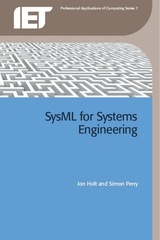 SysML for Systems Engineering
Jon Holt
The Institution of Engineering and Technology, 2008 Systems modelling is an essential enabling technique for any systems engineering enterprise. These modelling techniques, in particular the unified modelling language (UML), have been employed widely in the world of software engineering and very successfully in systems engineering for many years. However, in recent years there has been a perceived need for a tailored version of the UML that meets the needs of today's systems engineering professional. This book provides a pragmatic introduction to the systems engineering modelling language, the SysML, aimed at systems engineering practitioners at any level of ability, ranging from students to experts. The theoretical aspects and syntax of SysML are covered and each concept is explained through a number of example applications. The book also discusses the history of the SysML and shows how it has evolved over a number of years. All aspects of the language are covered and are discussed in an independent and frank manner, based on practical experience of applying the SysML in the real world.
SysML for Systems Engineering: A model-based approach
Jon Holt
The Institution of Engineering and Technology, 2013 This new edition of this popular text has been fully updated to reflect SysML 1.3, the latest version of the standard, and the discussion has been extended to show the power of SysML as a tool for systems engineering in an MBSE context. Beginning with a thorough introduction to the concepts behind MBSE, and the theoretical aspects and syntax of SysML, the book then describes how to implement SysML and MBSE in an organisation, and how to model real projects effectively and efficiently, illustrated using an extensive case study.
SysML for Systems Engineering: A model-based approach
Jon Holt
The Institution of Engineering and Technology, 2019 Systems Modelling Language (SysML) is a tailored version of the unified modelling language (UML) that meets the needs of today's systems engineering professionals and engineers. It supports the specification, analysis, design, verification and validation of a broad range of systems and systems-of-systems, including hardware, software, information, personnel, procedures, and facilities in a graphical notation.
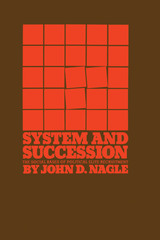 System and Succession: The Social Bases of Political Elite Recruitment
By John D. Nagle
University of Texas Press, 1977 System and Succession provides a comparative analysis of the social composition of national political leadership in the United States, Russia, Germany, and Mexico. These systems were chosen as case studies because their forms of government are representative of many others, because they are conveniently suited for comparison, and because they have high internal control over their own means of recruitment. Drawing on a mass of data and an extensive bibliography, Nagle's comprehensive study exhibits a mastery of the intricacies of these four quite divergent political systems. Complete time-series data covering several generations of elite recruitment provide the basis for a new methodological approach to comparative elite analysis.
The author investigates, among other issues, elite displacements associated with revolution, economic crises, and postwar peace and prosperity. Especially important differences along class and generational lines are found in the elite displacements associated with the revolutions in Germany (1918), Russia (1917–1921), and Mexico (1910–1920). The American case serves as a nonrevolutionary control case. The overriding theoretical issue throughout System and Succession is the debate among Marxists, radical democrats, and pluralists over the importance of elite social composition for equitable representation of social or class interests. Nagle develops a convincing argument supporting the Marxist thesis that the importance of class in elite recruitment is a defining characteristic of the political system.
System and Succession will be of particular interest to scholars in comparative politics. Political scientists in other areas, as well as historians and sociologists interested in the four countries examined, will also find this book provocative.
System Design with Memristor Technologies
Lauren Guckert
The Institution of Engineering and Technology, 2018 Memristors are a new class of circuit element with the ability to change their resistance value while retaining memory of their current and past resistances. Their small form factor, high density, and fast switching times have sparked research into their applications in modern memory hierarchies. However, these new components pose system design challenges, as well as opportunities.
System Level Control and Optimisation of Microgrids
Alessandra Parisio
The Institution of Engineering and Technology, 2024 Microgrids are essential components of next-generation energy grids. A microgrid is a local, integrated energy system comprising interconnected loads and distributed energy resources; they can represent urban or rural districts, islands or local communities. Microgrids can operate in parallel with the main grid or independently in an intentional island mode. When on-site generation is included, intelligent buildings can also function as microgrids. Efficient optimization and control algorithms are crucial for ensuring optimal microgrid performance, making them a continuous focus of research and development in the field of power systems.
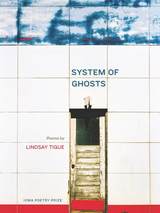 System of Ghosts
Lindsey Tigue
University of Iowa Press, 2016 In System of Ghosts, Lindsay Tigue details the way landscape speaks to isolation and personhood, how virtual and lived networks alter experience. She questions how built environments structure lives, how we seek out information within these spaces, and, most fundamentally, how we love.
Rooted in the personal, the speaker of this collection moves through society and history, with the aim of firmly placing herself within her own life and loss. Facts become an essential bridge between spatial and historical boundaries. She connects us to the disappearance of species, abandoned structures, and heartbreak—abandoned spaces that tap into the searing grief woven into society’s public places. There is solace in research, one system this collection uses to examine the isolation of contemporary life alongside personal, historical, and ecological loss. While her poems are intimate and personal, Tigue never turns away from the larger contexts within which we all live.
System of Ghosts is, at its core, an act of reaching out—across time, space, history, and across the room.
A System of Logistic
W. V. Quine
Harvard University Press This book develops in detail a comprehensive system of mathematical logic, which attains to a new level of generality through the treatment of indefinitely extended sequences of entities as single terms. In the structure of the system, sequences and classes figure as fundamental, the prepositional function being entirely eliminated. Propositions are construed as a kind of sequences; quantification and the various devices of the prepositional calculus are developed in terms of classes. Further contributions to theory and method are to be found throughout the treatment of classes and relations.
The System of Professions: An Essay on the Division of Expert Labor
Andrew Abbott
University of Chicago Press, 1988 In The System of Professions Andrew Abbott explores central questions about the role of professions in modern life: Why should there be occupational groups controlling expert knowledge? Where and why did groups such as law and medicine achieve their power? Will professionalism spread throughout the occupational world? While most inquiries in this field study one profession at a time, Abbott here considers the system of professions as a whole. Through comparative and historical study of the professions in nineteenth- and twentieth-century England, France, and America, Abbott builds a general theory of how and why professionals evolve.
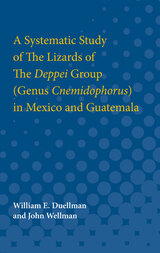 A Systematic Study of The Lizards of The Deppei Group (Genus Cnemidophorus) in Mexico and Guatemala
By William E. Duellman and John Wellman
University of Michigan Press, 1960 Lizards of the genus Cnemidophorus long have been a thorn in the sides of herpetologists. Commonly known as whiptail lizards or racerunners, species in this genus occur in North, Central, and South America. Probably the most confusing thing about these lizards is the ontogenetic change in color pattern, which through its variety of manifestations runs the gamut in convergence and parallelism. The purpose of this study is to review the species of the deppei group of Cnemidophorus and to present a classification of them, using some taxonomic characters that previously have not been applied. During the course of this study, 2,302 specimens were examined, revealing the presence of three species and ten races. The species differ from one another in the relative size of the dorsal granules, the size of the body, color pattern, and ontogenetic change in color pattern. The ranges of the species appear to be discontinuous. The present distributions probably are the result of climatic shifts during the Pleistocene.
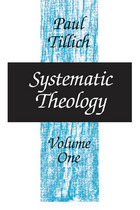 Systematic Theology, Volume 1
Paul Tillich
University of Chicago Press, 1951 This is the first part of Paul Tillich's three-volume Systematic Theology, one of the most profound statements of the Christian message ever composed and the summation and definitive presentation of the theology of the most influential and creative American theologian of the twentieth century.
In this path-breaking volume Tillich presents the basic method and statement of his system—his famous "correlation" of man's deepest questions with theological answers. Here the focus is on the concepts of being and reason. Tillich shows how the quest for revelation is integral to reason itself. In the same way a description of the inner tensions of being leads to the recognition that the quest for God is implied in finite being.
Here also Tillich defines his thought in relation to philosophy and the Bible and sets forth his famous doctrine of God as the "Ground of Being." Thus God is understood not as a being existing beside other beings, but as being-itself or the power of being in everything. God cannot be made into an object; religious knowledge is, therefore, necessarily symbolic.
Systematic Theology, Volume 2
Paul Tillich
University of Chicago Press, 1957 In this volume, the second of his three-volume reinterpretation of Christian theology, Paul Tillich comes to grips with the central idea of his system—the doctrine of the Christ. Man's predicament is described as the state of "estrangement" from himself, from his world, and from the divine ground of his self and his world. This situation drives man to the quest for a new state of things, in which reconciliation and reunion conquer estrangement. This is the quest for the Christ.
Systematic Theology, Volume 3
Paul Tillich
University of Chicago Press, 1963 In this volume, the third and last of his Systematic Theology, Paul Tillich sets forth his ideas of the meaning of human life, the doctrine of the Spirit and the church, the trinitarian symbols, the relation of history to the Kingdom of God, and the eschatological symbols. He handles this subject matter with powerful conceptual ability and intellectual grace.
The problem of life is ambiguity. Every process of life has its contrast within itself, thus driving man to the quest for unambiguous life or life under the impact of the Spritual Presence. The Spritual Presence conquers the negativities of religion, culture, and morality, and the symbols anticipating Eternal Life present the answer to the problem of life.
Systematics and Conservation of African Plants: Proceedings of the 18th AETFAT Congress, Yaoundé, Cameroon
Edited by Xander van der Burgt
Royal Botanic Gardens, Kew, 2010
An edited volume based on the proceedings of the eighteenth Association for the Taxonomic Study of the Flora of Tropical Africa Congress held in Yaoundé, Cameroon, Systematics and Conservation of African Plants includes one hundred research papers in separate sections on taxonomy, phytogeography, ethnobotany, and the conservation and sustainable use of African plants. Topics covered include recent advances in reproductive biology, vegetation, and Podostometaceae in Africa. A separate section on African floras reflects the present state of knowledge and progress towards our understanding and documentation of the plants of Africa.
Systematics and the Origin of Species from the Viewpoint of a Zoologist: With a New Introduction by the Author
Ernst Mayr
Harvard University Press, 1999 Ernst Mayr is perhaps the most distinguished biologist of the twentieth century, and Systematics and the Origin of Species may be one of his greatest and most influential books. This classic study, first published in 1942, helped to revolutionize evolutionary biology by offering a new approach to taxonomic principles and correlating the ideas and findings of modern systematics with those of other life science disciplines. This book is one of the foundational documents of the “Evolutionary Synthesis.” It is the book in which Mayr pioneered his new concept of species based chiefly on such biological factors as interbreeding and reproductive isolation, taking into account ecology, geography, and life history.
In his new Introduction for this edition, Mayr reflects on the place of this enduring work in the subsequent history of his field.
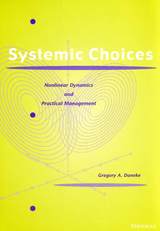 Systemic Choices: Nonlinear Dynamics and Practical Management
Gregory A. Daneke
University of Michigan Press, 1999 The revolution in social scientific theory and practice known as nonlinear dynamics, chaos, or complexity, derived from recent advances in the physical, biological, and cognitive sciences, is now culminating with the widespread use of tools and concepts such as praxis, fuzzy logic, artificial intelligence, and parallel processing. By tracing a number of conceptual threads from mathematics, economics, cybernetics, and various other applied systems theoretics, this book offers a historical framework for how these ideas are transforming the social sciences. Daneke goes on to address a variety of persistent philosophical issues surrounding this paradigm shift, ranging from the nature of human rationality to free will. Finally, he describes this shift as a path for revitalizing the social sciences just when they will be most needed to address the human condition in the new millennium.
Systemic Choices describes how praxis and other complex systems tools can be applied to a number of pressing policy and management problems. For example, simulations can be used to grow a number of robust hybrid industrial and/or technological strategies between cooperation and competition. Likewise, elements of international agreements could be tested for sustainability under adaptively evolving institutional designs. Other concrete applications include strategic management, total quality management, and operational analyses.
This exploration of a wide range of technical tools and concepts will interest economists, political scientists, sociologists, psychologists, and those in the management disciplines such as strategy, organizational behavior, finance, and operations.
Gregory A. Daneke is Professor of Technology Management, Arizona State University, and of Human and Organization Development, The Fielding Institute.
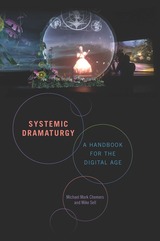 Systemic Dramaturgy: A Handbook for the Digital Age
Michael Mark Chemers and Mike Sell
Southern Illinois University Press, 2022 Working theatrically with technology
Systemic Dramaturgy offers an invigorating, practical look at the daunting cultural problems of the digital age as they relate to performance. Authors Michael Mark Chemers and Mike Sell reject the incompatibility of theatre with robots, digital media, or video games. Instead, they argue that technology is the original problem of theatre: How can we tell this story and move this audience with these tools? And if we have different tools, how can that change the stories we tell?
This volume attunes readers to “systemic dramaturgy”—the recursive elements of signification, innovation, and history that underlie all performance—arguing that theatre must be understood as a system of systems, a concatenation of people, places, things, politics, feelings, and interpretations, ideally working together to entertain and edify an audience. The authors discuss in-depth the application of time-tested dramaturgical skills to extra-theatrical endeavors, including multi-platform performance, installations, and videogames. And they identify the unique interventions that dramaturgs can and must make into these art forms.
More than any other book that has been published in the field, Systemic Dramaturgy places historical dramaturgy in conversation with technologies as old as the deus ex machina and as new as artificial intelligence. Spirited and playful in its approach, this volume collates histories, transcripts, and case studies and applies the concepts of systemic dramaturgy to works both old and avant-garde. Between chapters, Chemers and Sell talk with with some of the most forward-thinking, innovative, and creative people working in live media as they share their diverse approaches to the challenges of making performances, games, and digital media that move both heart and mind. This volume is nothing less than a guide for thinking about the future evolution of performance.
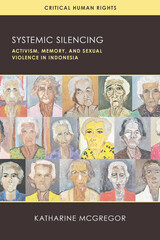 Systemic Silencing: Activism, Memory, and Sexual Violence in Indonesia
Katharine E. McGregor
University of Wisconsin Press, 2023 The system of prostitution imposed and enforced by the Japanese military during its wartime occupation of several countries in East and Southeast Asia is today well-known and uniformly condemned. For decades, transnational activist movements have sought to recognize and redress survivors of this World War II–era system, euphemistically known as “comfort women,” with major movements in South Korea, the Philippines, Japan, and elsewhere. However, Indonesian survivors, and even the system’s history in Indonesia to begin with, have largely been sidelined, even within the country itself. Katharine E. McGregor untangles the history of the system during the war and unpacks the context surrounding the slow and faltering efforts to address it. With careful attention to the historical, social, and political conditions surrounding sexual violence in Indonesia, supported by exhaustive research and archival diligence, she uncovers a crucial piece of Indonesian history and the ongoing efforts to bring it to the public eye. Critically, she establishes that the transnational part of activism surrounding victims of the system is both necessary and fraught, a complexity of geopolitics and international relationships on one hand and a question of personal networks, linguistic differences, and cultural challenges on the other.
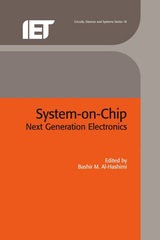 System-on-Chip: Next generation electronics
Bashir M. Al-Hashimi
The Institution of Engineering and Technology, 2006 System-on-Chip (SoC) is believed to represent the next major market for microelectronics, and there is a considerable interest world-wide in developing effective methods and tools to support the SoC paradigm. The field of SoC is broad and expanding and at present the technical and technological literature about the overall state-of-the-art in SoC is dispersed across a wide spectrum of books, journals, and conference proceedings. This edited book is an attempt to provide a comprehensive and accessible source of state-of-the-art information on existing and emerging SoC key research areas. In particular, the book covers the general principles and ideas of designing, validating and testing complex embedded computing systems and their underlying tradeoffs. Twenty-five international research groups have contributed to the book. Each contribution has an up-to-date survey highlighting the key achievements and future trends. To facilitate the understanding of the various topics covered in the book, each chapter has some background covering the basic principles, and extensive list of references. To enhance the book readability, the chapters are grouped into eight parts, each part examining a particular theme of SoC, including system design, embedded software, power management, reconfigurable computing, network-on-chip, verification and test. The book will be of interest to graduate students, designers and managers working in Electronic and Computer engineering.
Systems Engineering for Ethical Autonomous Systems
Tony Gillespie
The Institution of Engineering and Technology, 2019 The transfer of responsibility for decisions and actions from humans to machines presents difficult problems for all those concerned with new concepts, their development and use. This book gives practical help by discussing the issues in the context of product design, and gives a methodology to solve them.
 Systems, Institutions, and Values in East and West: Engaging with János Kornai's Scholarship
Miklós Rosta
Central European University Press, 2020 Leading social scientists, empirical analysts, and policy practitioners demonstrate the various ways in which the insights of János Kornai, a renowned early analyst and critic of the command economies of Eastern European communist states, are stirring academic and policy discussions about current challenges. While dissecting the economic theories and practices in the Soviet Bloc, Kornai devised and applied concepts such as soft-budget constraints, rush versus harmonic growth, surplus versus shortage economy, non-Walrasian equilibrium, bureaucratic coordination, and the invisible power of the communist party. These concepts are commonly applied to a variety of issues in the contexts of fundamental transformation. The cases discussed in this volume include the transitional paths of post-communist economies, the pitfalls of East European market-building, economic repercussions of the dissolution of Yugoslavia, and the process of integration in the Eurozone. In conclusion János Kornai’s thoughts on a variety of research topics as well as the value of democracy are included as he delivered at the conference celebrating his 90th birthday in 2018.
 Systems of Control in International Adjudication and Arbitration: Breakdown and Repair
W. Michael Reisman
Duke University Press, 1992 In a world where nations are increasingly interdependent and where their problems--whether environmental, economic, or military--have a global dimension, the resolution of international disputes has become critically important. In Systems of Control in International Adjudication and Arbitration, W. Michael Reisman, one of America's foremost scholars and practitioners of international law, examines the controls that govern arbitration—a method of alternative, private, and relatively unsupervised dispute resolution—and shows how these controls have broken down.
Reisman considers three major forms of international arbitration: in the International Court; under the auspices of the World Bank; and under the New York Convention of 1958. He discusses the unique structures of control in each situation as well as the stresses they have sustained. Drawing on extensive research and his own experience as a participant in the resolution of some of the disputes discussed, Reisman analyzes recent key decisions, including: Australia and New Zealand's attempt to stop France's nuclear testing in Muroroa; AMCO vs. Republic of Indonesia, concerning the construction of a large tourist hotel in Asia; and numerous others.
Reisman explores the implications of the breakdown of control systems and recommends methods of repair and reconstruction for each mode of arbitration. As a crucial perspective and an invaluable guide, this work will benefit both scholars and practitioners of international dispute resolution.
Systems of Linear Inequalities
A. S. Solodovnikov
University of Chicago Press, 1980 This volume describes the relationship between systems of linear inequalities and the geometry of convex polygons, examines solution sets for systems of linear inequalities in two and three unknowns (extension of the processes introduced to systems in any number of unknowns is quite simple), and examines questions of the consistency or inconsistency of such systems. Finally, it discusses the field of linear programming, one of the principal applications of the theory of systems of linear inequalities. A proof of the duality theorem of linear programming is presented in the last section.
 Systems of Suffering: Dispersal and the Denial of Asylum
Jonathan Darling
Pluto Press, 2021 'Elegant and disturbing. A brilliant analysis of the cruel biopolitics of care in contemporary Britain' - Ash Amin
Of the many state-enacted cruelties to which refugees and asylum seekers are subjected, detention and deportation loom largest in popular consciousness. But there is a third practice, perpetrating a slower violence, that remains hidden: dispersal.
Jonathan Darling provides the first detailed account of how dispersal - the system of accommodation and support for asylum seekers and refugees in Britain - both sustains and produces patterns of violence, suffering and social abjection. He explores the evolution of dispersal as a privatized process, from the first outsourced asylum accommodation contracts in 2012 to the renewed wave of outsourcing pursued by the Home Office today.
Drawing on six years of research into Britain's dispersal system, and foregrounding the voices and experiences of refugees and asylum seekers, Darling argues that dispersal has played a central role in the erasure of asylum from public concern. Systems of Suffering is a vital tool in the arsenal of those fighting to hold the government to account for the violence of its asylum policy and practice.
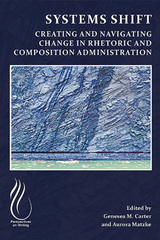 Systems Shift: Creating and Navigating Change in Rhetoric and Composition Administration
Genesea M. Carter
University Press of Colorado, 2024 This collection extends the discourse on systems within the field of rhetoric and composition by drawing connections among the administrative work we do, the values we hold, and the systems that shape our work and our selves. The contributors to this collection consider how rhetoric and composition administrators’ change-making efforts address, among other activities, equitable labor and working conditions, student and/or faculty retention, curriculum development and redesign, program assessment, professional development support, and mental and/or physical well-being. They explore how these efforts are embodied acts that interact with and participate in systems and networks that often remain unacknowledged even as those within these systems and networks actively work against that oppression. Recognizing that systems and networks can at times supersede administrator, faculty, and student consensus for change, each chapter includes recommendations for addressing the complexities involved in working toward a more just workplace and profession.
 Systems We Have Loved: Conceptual Art, Affect, and the Antihumanist Turn
Eve Meltzer
University of Chicago Press, 2013 By the early 1960s, theorists like Lévi-Strauss, Lacan, Foucault, and Barthes had created a world ruled by signifying structures and pictured through the grids of language, information, and systems. Artists soon followed, turning to language and its related forms to devise a new, conceptual approach to art making. Examining the ways in which artists shared the structuralist devotion to systems of many sorts, Systems We Have Loved shows that even as structuralism encouraged the advent of conceptual art, it also raised intractable problems that artists were forced to confront. Considering such notable art figures as Mary Kelly, Robert Morris, Robert Smithson, and Rosalind Krauss, Eve Meltzer argues that during this period the visual arts depicted and tested the far-reaching claims about subjectivity espoused by theorists. She offers a new way of framing two of the twentieth century’s most transformative movements—one artistic, one expansively theoretical—and she reveals their shared dream—or nightmare—of the world as a system of signs. By endorsing this view, Meltzer proposes, these artists drew attention to the fictions and limitations of this dream, even as they risked getting caught in the very systems they had adopted. The first book to describe art’s embrace of the world as an information system, Systems We Have Loved breathes new life into the study of conceptual art.
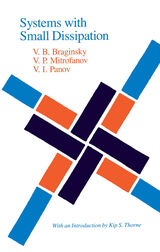 Systems with Small Dissipation
V. B. Braginsky, V. P. Mitrofanov, and V. I. Panov
University of Chicago Press, 1985 Electromagnetic and mechanical oscillators are crucial in such diverse fields as electrical engineering, microwave technology, optical technology, and experimental physics. For example, such oscillators are the key elements in instruments for detecting extremely weak mechanical forces and electromagnetic signals are essential to highly stable standards of time and frequency. The central problem in developing such instruments is to construct oscillators that are as perfectly simple harmonic as possible; the largest obstacle is the oscillator's dissipation and the fluctuating forces associated with it.
This book, first published in Russian in 1981 and updated with new data for this English edition, is a treatise on the sources of dissipation and other defects in mechanical and electromagnetic oscillators and on practical techniques for minimizing such defects. Written by a team of researchers from Moscow State University who are leading experts in the field, the book is a virtual encyclopedia of theoretical formulas, experimental techniques, and practical lore derived from twenty-five years of experience. Intended for the experimenter who wishes to construct near-perfect instrumentation, the book provides information on everything from the role of phonon-phonon scattering as a fundamental source of dissipation to the effectiveness of a thin film of pork fat in reducing the friction between a support wire and a mechanically oscillating sapphire crystal.
The researchers that V. B. Braginsky has led since the mid-1960s are best known in the West for their contributions to the technology of gravitational-wave detection, their experimental search for quarks, their test of the equivalency principle, and their invention of new experimental techniques for high-precision measurement, including "quantum nondemolition movements." Here, for the first time, they provide a thorough overview of the practical knowledge and experimental methods that have earned them a worldwide reputation for ingenuity, talent, and successful technique.
|
|
